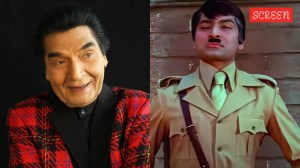Buenos Aires, My Darling
Argentine fiction is less magic and more realism

Argentine fiction is less magic and more realism
Pedro Mairal isn’t your college literature professor’s idea of an Argentine novelist. Laid-back and casually attired, the 37-year-old writer made his mark with A Night With Sabrina Love, the cyber-picaresque tale of a spirited 18-year-old boy whose fantasies get upended after winning a night with the porn star of his dreams.
Serious fiction in this country used to revolve around brain-teasing plots filled with jazz-like philosophical riffs. Today it’s more likely to revolve around porn stars, Renaissance-era sexual intrigue and the emotional infidelities of married men.
Ask a typical North American reader to name an Argentine writer and they may say Borges or Cortazar. But Jorge Luis Borges died in 1986, and Julio Cortazar in 1984. In the years since, Argentina has morphed from a military dictatorship into a functional democracy and experienced a cultural upheaval that has yielded accomplished young fiction writers now in their late 30s and early 40s.
However, unlike the literary coterie of the 1950s and ‘60s, the new generation of Argentine writers still hasn’t penetrated popular awareness outside the continent.That may be about to change. At last, a handful of works by young and middle-age Argentine authors are finding their way into English-language editions.
These writers have moved beyond “magic realism,” a style that dazzled readers 40 years ago in such masterpieces as Garcia Marquez’s One Hundred Years of Solitude. Mairal says that a French publisher initially rejected Sabrina Love because “it lacked magic realism and politics.” However, the novel struck a chord with younger Argentine readers who came of age in a more open, permissive society than their parents. One thing that unites many of Buenos Aires’ young writers is their preoccupation with the city itself. Like Borges, young authors draw sustenance from their debonair, melancholy capital.
“I never felt I was a Latin American (writer). I share the language of Latin America, but I’m a ‘porteno’ (Buenos Aires dweller),” says Marcelo Birmajer (in picture), who writes in the ethnically diverse El Once neighborhood where he was born and raised – the historic Jewish quarter, now increasingly populated by immigrants. His stories are richly embroidered with the daily fabric of Argentine-Jewish life in a way that recalls Isaac
Bashevis Singer — “my greatest master,” Birmajer says. Other Argentine writers are speaking to the country’s present-day aspirations and neuroses. Federico Andahazi’s breakout novel The Anatomist, about a 16th-century Italian surgeon who lusts for a high-priced courtesan, is being adapted by Los Angeles-based Stone Village Pictures.Published in English by Doubleday, it became a “succes de scandale” after its 1997 publication in Argentina. With its decadent ambience, Inquisitorial potentates and ego-driven arts patrons, The Anatomist bore more than a passing resemblance to Buenos Aires.
The military years helped Andahazi shape his life and art. During the dictatorship, a generation of Argentine writers, such as Rodolfo Walsh and Haroldo Conti, was murdered or “disappeared,” he says. “Everything in this continent was massacred by military dictators. And one of the greatest victims was literature.” Andahazi’s work is rooted in Argentina. The setting for his novel The Prince (2000), is place that seems “pretty much like Argentina, but not exactly.” Yet the old Buenos Aires that inspired imaginative flights is changing. A widening income gap, globalization and suburban sprawl are altering the city’s cultural identity. Andahazi says, porteno literary culture presents “a more insular panorama” than in the past. “Each writer is like an island,” he says.
-Reed Johnsonc (LAT-WP)





- 01
- 02
- 03
- 04
- 05

























